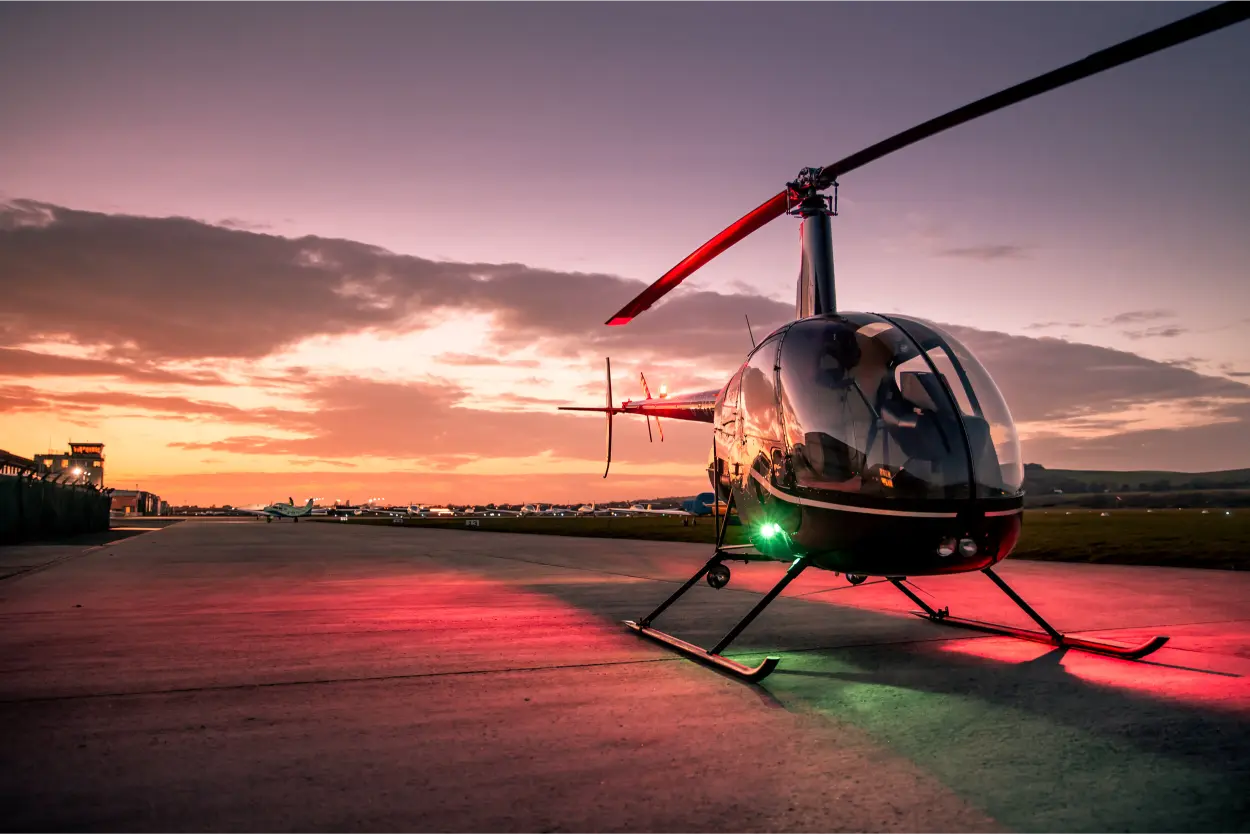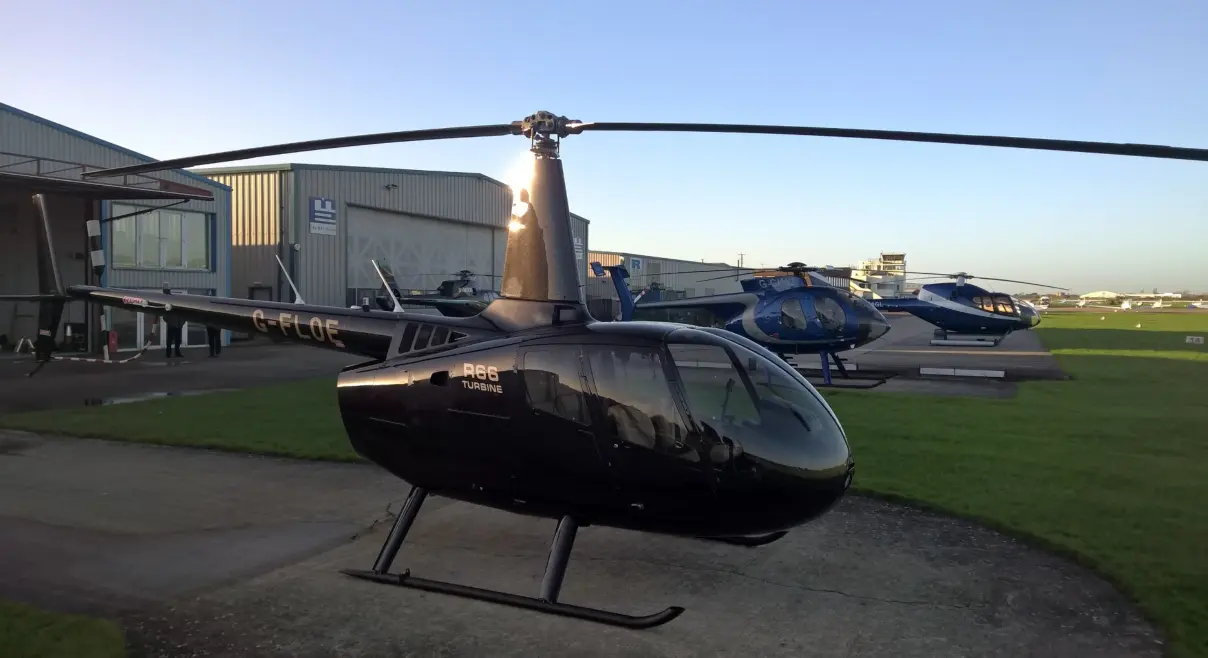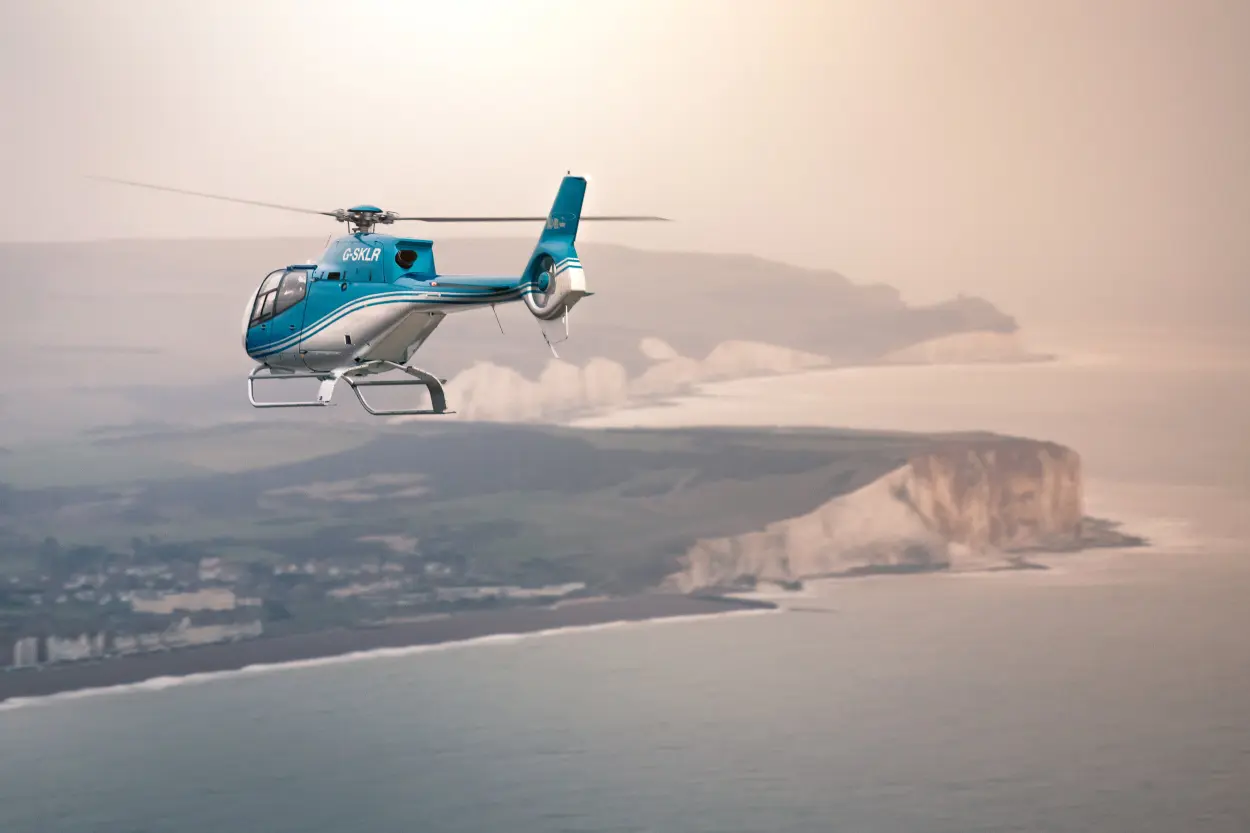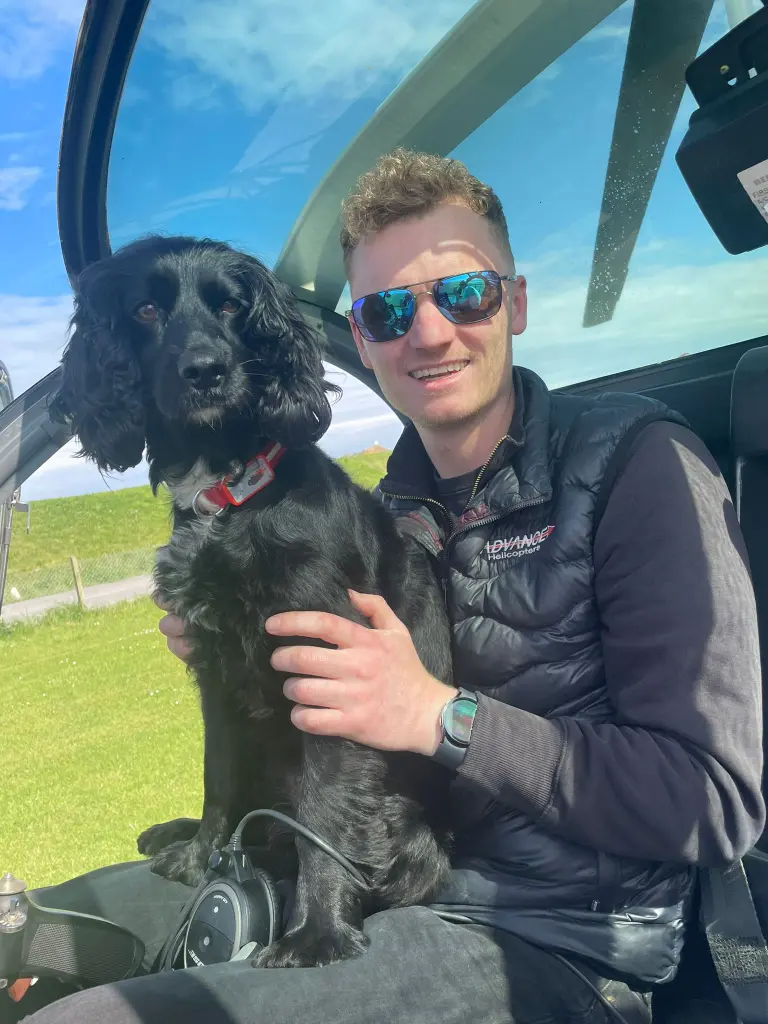Ever wondered what it’s like to teach the next generation of helicopter pilots? In this article, guest writer and experienced helicopter instructor Harvey, based on the south coast of the UK, takes us through a day in the life of a helicopter instructor.
Company, position & base?
Advance Helicopters, Flight Instructor, Brighton City Airport (Shoreham)
Can you summarise your job role in one sentence?
I instruct students to achieve their helicopter private pilots licence PPL(H), a new type rating, or help existing licence holders to become better, safer helicopter pilots.
Example of a typical “day in the life” of a helicopter instructor?
I’ll usually check the diary and weather forecast the day before to ensure the following day is suitable for the booked lessons. I am lucky enough to be able to walk to work with my spaniel Fizz most days as I live nice and close to the airport. When I arrive, I’ll have a catchup with our ops team and Head of Training to make sure we are all up to date with the days programme. I check the weather, NOTAMS and aircraft tech logs to ensure all are suitable to achieve the days flying. I will often check the aircraft myself and fuel up before the students arrive. However, this is sometimes done with the student as part of the lesson.
When the student arrives, we will start in the briefing room to discuss the exercise(s) to be covered in the lesson. I will brief what the flight will involve, what they need to do and why, and the potential threats we may encounter and how we’ll manage them. The briefing is usually 30 – 45 mins. I’ll then sign the paperwork, and we’ll head out to the aircraft. Most lessons are flown locally to Shoreham for about an hour. The student will do as much of the flying as possible, with me teaching and demonstrating as required.
Once back on the ground, we’ll debrief back in the classroom, discussing what went well, what can be improved, and how and what to expect in their next lesson. I will fill in the paperwork before preparing for the next student. On a good day, I’ll usually fly with four students in the summer and three in the winter.
Why did you choose this job & what path did you take to get here?
Although I’ve always wanted to be a helicopter pilot, I’d never considered instructing until I was offered the job. I really enjoyed the process of learning to fly myself, and was lucky enough to be offered a job at the school where I learnt, subject to me getting my instructor’s rating. I did and am now enjoying my 7th year of teaching.
Two favourite aspects of your current role?
I love the hands-on nature of instructing. We’re rarely flying in a straight line on autopilot.
I get a real kick out of student successes. Whether it’s something small like finding the right words or demonstrating an exercise, in a way that “clicks” some understanding or know-how into place for the student, or something big like them flying solo for the first time or passing a skills test.
What’s one great thing about your company?
We have a varied fleet. I’m rated on seven aircraft. Although it’s tough keeping seven ratings current and staying on top of all the different numbers and procedures for each, I find it really interesting to fly different aircraft.
What are the two most challenging aspects of being a helicopter instructor?
Weather cancellations or aircraft downtime due to maintenance is always frustrating. The days can also be very busy, especially if I have four or more lessons and must get multiple helicopters ready.
One surprising part of the job for you?
The variety of students we get. Students of all ages, from all walks of life, learn with us. The PPL course is a minimum of 45 hours, so I get to know them really well. I guess due to the nature of helicopters, they’re all really cool, and most become good friends.
Can you share any very memorable days on the job?
We sometimes organise fly-outs for past students. Last summer we flew in formation to Spa in Belgium to watch the World Endurance Championship race.
Most commonly asked flying-related question you get at a party? What’s your answer?
Do I own my own helicopter?
I wish!
Would you recommend your career path to budding or current pilots right now? Any advice for them?
Definitely. Instructing is a really fun and rewarding job. It’s a great way of honing your own skills and makes you a really good handling pilot. It’s also a good way to build a lot of hours quite quickly and meet some good contacts.
Rough flying hours per month for a helicopter instructor?
50
Is the salary competitive & how does the salary structure work? (Understandable if you don’t wish to share this!)
A lot of flight schools only pay their instructors for the flight hours. This can be great during busy periods, but there can be some slower months, particularly in winter.
What does a “bad day at work” look like for you?
Poor weather, leading to cancellations or a ground school-only day.
What does a “great day at work” look like for you?
Lots of flying, landing away and exploring new places with nice people.
What impact does the job have on your mental or physical health?
As mentioned previously, they can be full-on, busy days. Thankfully, we have a great team who support each other really well.
What strategies do you have for maintaining positive mental & physical health that could be useful to other pilots?
Good communication with other team members is key. I also think it’s important to switch off outside of work. My main method is walking my dog.
What mental health support is available to you in the workplace? Do you think this is adequate? Any ways you think it could be improved?
We’re a very small team that has worked together for a long time. It’s like a second family. We look out for each other and communicate well.
A big thank you to Harvey for sharing his insights into life as a helicopter instructor. We appreciate the behind-the-scenes look at this challenging and rewarding career!
Share post with a friend:














